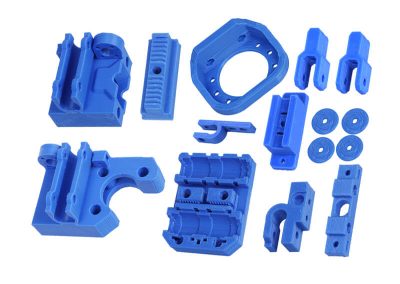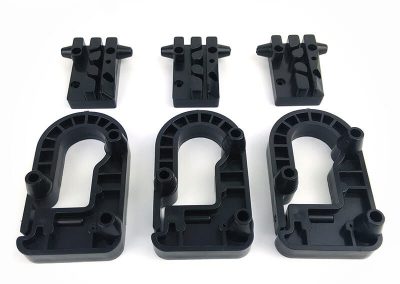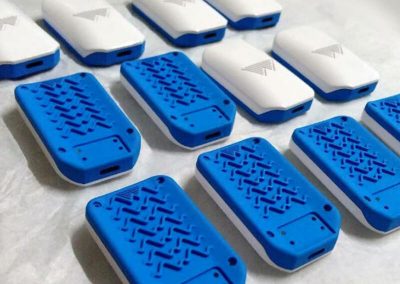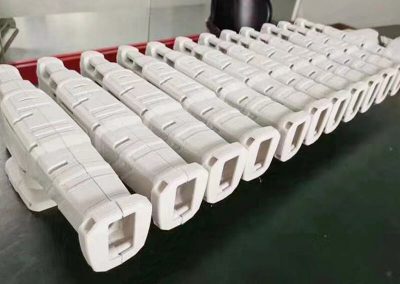Injection Molding Prototyping Service
Injection molding prototyping technology facilitates efficient and cost-effective evaluation of part form, fit and function. In the world of product development and manufacturing, injection molding prototyping technology is the key to rapid iteration and design improvement. After a custom plastic part has been clearly illustrated and may seem ready for production, there may be some very good reasons to consider prototype injection molding (making injection molded prototypes) before going into mass production.
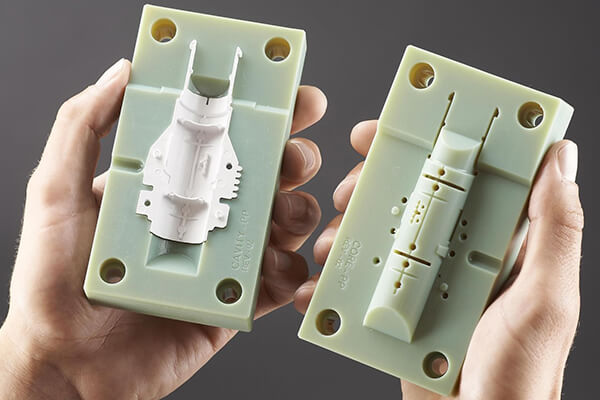
What is Injection Molding Prototyping?
Injection molding is a widely used manufacturing process in which plastic material is melted and injected under high pressure into a mold cavity. At the same time, injection molding is also a versatile process used to manufacture plastic parts of different sizes and shapes, ranging from small components to large objects. The process is versatile and efficient, making it suitable for the large-scale manufacture of complex and precise parts.
Plastic Injection molding is used for mass production, while injection molding prototyping technology is used for rapid prototyping and design verification. Injection molding prototyping is a specialized application of the injection molding process mainly used for creating prototypes and testing parts rather than mass production. It involves the rapid production of small batches of parts or products using injection molding techniques. The primary purpose of injection molding prototyping is to assess and validate a product’s design, fit, and functionality before committing to full-scale production. Injection molding prototyping is a valuable technique. It’s widely used in industries ranging from automotive to consumer goods to medical devices to ensure that the final product meets quality and performance standards.
Why Begin With Injection Molded Prototype?
- Cost-Efficient Tooling: Prototype Molding employs tooling optimized for smaller runs, often crafted from cost-effective materials. This simplicity in design reduces production expenses.
- Speedy Turnaround: Whether it’s rapid prototyping or meeting tight deadlines, the prototype mold process offers swift results, delivering parts in as little as 10 business days.
- Limited Production: Ideal for projects requiring a restricted quantity of high-quality parts, Prototype Molding is well-suited for quantities ranging from 10,000 to 50,000, depending on the chosen tooling.
- Cost Efficiency: With low unit costs at higher quantities, Prototype Molding frequently offers better value compared to alternative rapid prototyping methods like Additive Manufacturing.
- Product Validation: Starting with a limited volume run allows for product validation before committing to more substantial investments in production-level tooling and larger quantities.
Materials Used in Injection Molding Prototyping
Thermoplastics
- ABS (Acrylonitrile Butadiene Styrene): Known for its strength and impact resistance, ABS is commonly used for prototyping consumer products and automotive components.
- Polypropylene: This versatile material is lightweight, chemical-resistant, and suitable for applications like packaging, containers, and automotive parts.
- Polyethylene: It comes in various forms, including HDPE (High-Density Polyethylene) and LDPE (Low-Density Polyethylene), and is used for products ranging from bottles to toys.
- Polycarbonate: Polycarbonate offers high impact resistance and optical clarity, making it ideal for prototypes of optical lenses, electronics, and safety gear.
Thermosetting Plastics
- Polyurethane (PU): PU is flexible, durable, and can simulate rubber-like properties, making it suitable for prototypes of gaskets, seals, and elastomeric components.
- Epoxy Resin: Epoxy resins are used for electrical and electronic prototypes due to their excellent insulating properties.
Engineering Plastics
- Nylon (Polyamide): Nylon is strong, durable, and offers good wear resistance. It’s used for prototypes of gears, bearings, and structural components.
- Polyoxymethylene (POM): Also known as acetal, POM is a tough and rigid material used for prototypes of mechanical parts, such as gears and bushings.
- PEEK (Polyether Ether Ketone): PEEK is a high-performance material with excellent chemical resistance and is suitable for prototypes in demanding environments, like aerospace and medical.
Elastomers
- Silicone Rubber: Silicone is known for its flexibility and resistance to extreme temperatures. It’s used for prototypes of medical devices, seals, and consumer products.
Bioplastics
- PLA (Polylactic Acid): PLA is a biodegradable material used in environmentally friendly prototypes. It’s often chosen for packaging and consumer goods.
Benefits of Rapid Injection Molding Prototyping
Accelerated and More Reliable Product Launch
Many products face hurdles during launch, including cost and pricing misjudgments, insufficient market testing, and, most critically, product failures. Rapid prototyping and market testing can mitigate these challenges before product introduction.
Enhanced Product Functionality and Appearance
Products often fall short when assessed solely through engineering drawings and visualizations. Field-testing a prototype sample allows for evaluation of both functionality and aesthetics in real-world production scenarios.
Streamlined Design Process
Prototypes play a pivotal role in expediting the overall engineering and design review phases of new products. Moreover, possessing a physical prototype plastic part can effectively demonstrate its market viability to stakeholders.
Reduction in Tooling Costs
Manufacturers who bypass prototyping often encounter the need for costly adjustments to their production tooling. Embracing rapid prototype injection molding enables the identification and resolution of challenges prior to investing in expensive production molds.
Prototype Injection Molds vs Production Injection Molds
Prototype injection molding tools are specialized molds used in the injection molding process, specifically designed to create prototypes or small batches of parts or products. Unlike plastic injection molds used for mass production, prototype injection molding molds are typically less complex and made from more cost-effective materials. These molds allow for the rapid production of small batches of parts to test and evaluate designs before committing to full-scale production. They are a crucial component in the process of injection molding prototyping.
- Simplified Design: These tools are often less complex and less expensive than molds used for high-volume production because they are tailored for prototype and low-volume runs.
- Cost-Efficiency: While there are initial setup costs involved in creating the tool, prototype injection molding tools are cost-effective for producing smaller quantities of parts, making them suitable for projects with multiple design iterations.
- Quick Turnaround: They allow for rapid production of prototypes, providing parts in a short timeframe, which is particularly useful for projects with tight schedules or for iterative design testing.
- Material Compatibility: Prototype injection molding tools are designed to work with various materials, allowing prototypes to closely mimic the properties of the intended final product.
How Injection Molding Prototyping Can Improve Final Products
- Design Validation and Refinement:
Injection molded prototypes allow designers and engineers to validate the design of the final product. By creating physical prototypes, they can assess how well the design aligns with their vision and whether any design adjustments are needed. This iterative process ensures that the final product meets the intended aesthetic and functional criteria. - Functional Testing:
Engineers can assess how well the product performs under real-world conditions, identifying any functional issues or weaknesses. This testing phase helps ensure that the final product functions as intended and meets performance expectations. - Material Selection and Evaluation:
During the prototype phase, different materials and material combinations can be tested to determine which ones offer the best combination of strength, durability, and other required properties. - Iterative Improvement:
Injection molded prototypes support an iterative development process. Designers and engineers can make adjustments and refinements based on feedback from prototype testing. This iterative approach allows for continuous improvement and optimization of the product’s design and functionality. - Cost Optimization:
Identifying and addressing design or manufacturing issues during the prototype phase can lead to significant cost savings in the long run. By resolving potential problems early, companies can avoid costly production delays, retooling expenses, and material waste. - User Feedback Integration:
Physical prototypes can be shared with users, customers, or stakeholders for feedback and validation. This external input helps align the final product more closely with user needs and preferences, increasing customer satisfaction. - Time-to-Market Acceleration:
Injection molding prototypes enable a faster development cycle by identifying and addressing design and functionality issues early on. This accelerates the time-to-market, which is especially critical in competitive industries.
In essence, injection molding prototyping acts as a crucial bridge between conceptual design and full-scale production. It empowers designers and engineers to identify and address potential issues, optimize performance, and create a final product that aligns with both functional and aesthetic goals. By leveraging the benefits of prototyping, we can achieve higher quality, reduced costs, and faster time-to-market for their products.
Injection Molded Prototype Considerations
- Tool Lifespan
Prototype molding tooling is typically crafted from softer materials, which means they will wear out more quickly compared to molds made from tougher materials. - Mold Texture and Polishing
While it is possible to apply texturing and polishing to prototype molds, it’s essential to acknowledge that these effects are likely to deteriorate sooner due to the use of softer tooling materials. This may not justify the additional cost. Generally, we recommend finishes within the B to D SPI range for prototype molds. - Gating Methods
The choice of gating methods may be limited to edge, direct, or fan techniques for prototype molds. Gating methods that require high shear or hot runners are better suited for Bridge or Production tooling. - Mold Classes
For prototyping molding runs, Class 105 and 104 molds are the most appropriate choices. These molds are typically constructed from Aluminum or Mild Steel. Projects necessitating Class 103, 102, or 101 molds may be better suited for other production tiers and may require materials of a higher grade. - Material Selection
All injection molding materials in our inventory are available for use in prototype mold applications. However, it’s important to note that abrasive materials, such as glass-filled compounds, can accelerate wear and reduce the lifespan of a prototype tool.
In summary, careful consideration of these factors will help determine the feasibility of utilizing the injection molding prototyping process for your specific project.
Rapid Injection Molding Prototyping Service – Sungplastic
Get a free quote and design analysis today.
We’ll reply to you within 6 working hours.
We respect your privacy.
+86 139 2927 4777 (WhatsApp, Wechat)
Related Injection Molding Prototyping Resources
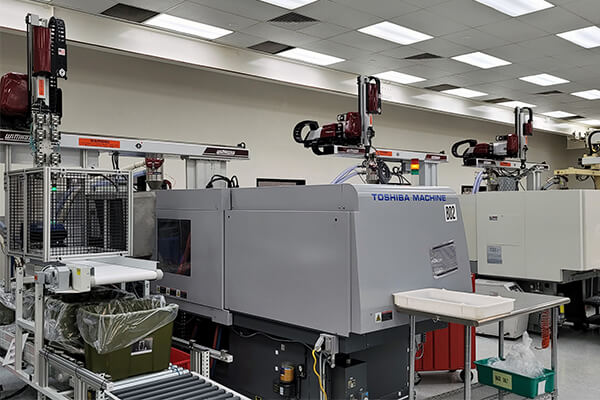
Full Service Manufacturing–One-Stop Solution
[pac_divi_table_of_contents...
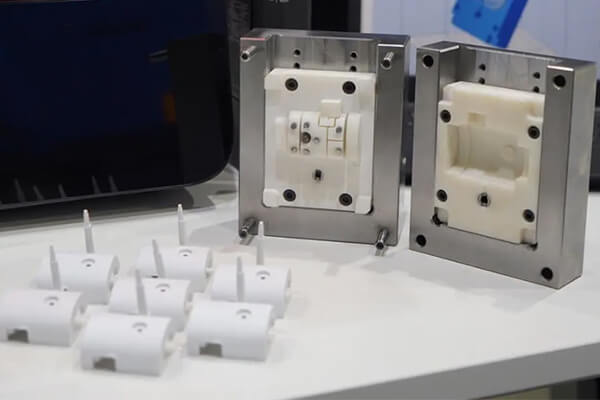
Low Volume Injection Molding
Low Volume Injection MoldingEfficiently and affordably...
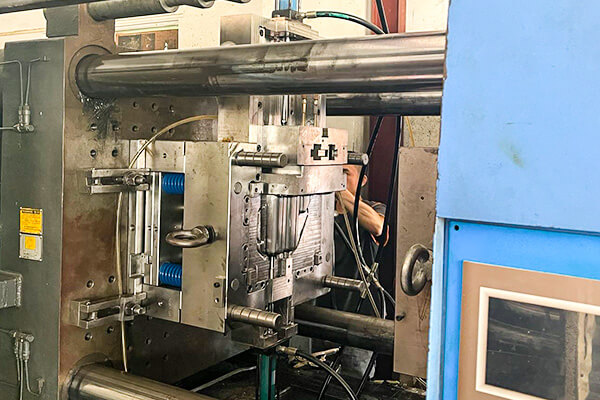
How Does Injection Molding Work?
[pac_divi_table_of_contents...

